img {
width: 70%;
}
Chief Specialist V.D. Feldman
1. Instead of a Preface
Two and a half years ago, our enterprise began the serial production of the “Balanset 1” device, designed for balancing rotary mechanisms in their own bearings.
To date, more than 180 sets have been produced, which are effectively used in various industries, including the production and operation of fans, blowers, electric motors, machine spindles, pumps, crushers, separators, centrifuges, cardan and crankshafts, and other mechanisms.
Recently, our enterprise has received a large number of inquiries from organizations and individuals regarding the possibility of using our equipment for balancing aircraft and helicopter propellers in field conditions.
Unfortunately, our specialists, with many years of experience in balancing various machines, had never previously dealt with this issue. Therefore, the advice and recommendations we could provide to our customers were very general and did not always allow them to effectively solve the problem at hand.
This situation began to improve this spring. This was due to the active position of V.D. Chvokov, who organized and actively participated with us in the work on balancing the propellers of Yak-52 and Su-29 aircraft, which he pilots.
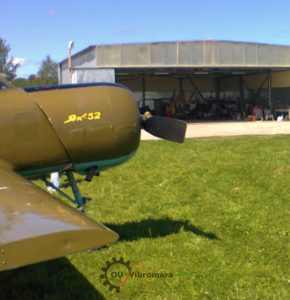
Fig. 1.1. Yak-52 aircraft on the airfield
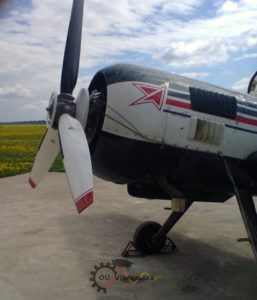
Fig. 1.2. Su-29 aircraft in the parking lot
2. Results of Propeller Balancing and Vibration Survey of the Yak-52 Aerobatic Aircraft
2.1. Introduction
In May – July 2014, work was carried out on the vibration survey of the Yak-52 aircraft equipped with the M-14P aviation engine, and the balancing of its two-blade propeller.
The balancing was carried out in one plane using the “Balanset 1” balancing kit, serial number 149.
The measurement scheme used during balancing is shown in Fig. 2.1.
During the balancing process, the vibration sensor (accelerometer) 1 was installed on the front cover of the engine gearbox using a magnet on a special bracket.
The laser phase angle sensor 2 was also installed on the gearbox cover and oriented to the reflective mark applied to one of the propeller blades.
Analog signals from the sensors were transmitted via cables to the measuring unit of the “Balanset 1” device, where they were pre-processed digitally.
Then these signals in digital form were sent to a computer, where software processed these signals and calculated the mass and angle of the correction weight needed to compensate for the imbalance on the propeller.
2.2. During the execution of this work, certain skills were acquired and a technology for balancing aircraft propellers in field conditions using the “Balanset 1” device was developed, including:
- Determining the locations and methods for installing (attaching) vibration and phase angle sensors on the object;
- Determining the resonance frequencies of several structural elements of the aircraft (engine suspension, propeller blades);
- Identifying the engine rotation frequencies (operating modes) that ensure minimal residual imbalance during balancing;
- Establishing tolerances for the residual imbalance of the propeller, etc.
In addition, interesting data on the vibration levels of aircraft equipped with M-14P engines were obtained.
Below are the report materials compiled based on the results of these works.
In them, in addition to the balancing results, data on the vibration surveys of Yak-52 and Su-29 aircraft obtained during ground and flight tests are provided.
These data may be of interest both to aircraft pilots and to specialists involved in their maintenance.
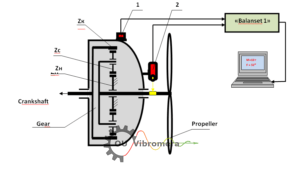
Fig. 2.1. Measurement scheme for balancing the Yak-52 aircraft propeller.
Zk – main gear wheel of the gearbox;
Zs – gearbox satellites;
Zn – stationary gear wheel of the gearbox.
During the execution of this work, taking into account the experience gained in balancing the propellers of the Su-29 and Yak-52 aircraft, a number of additional studies were conducted, including:
- Determining the natural frequencies of the engine and propeller oscillations of the Yak-52 aircraft;
- Checking the magnitude and spectral composition of vibrations in the second pilot’s cabin during flight after propeller balancing;
- Checking the magnitude and spectral composition of vibrations in the second pilot’s cabin during flight after propeller balancing and adjusting the tightening force of the engine shock absorbers.
2.2. Results of studies on the natural frequencies of engine and propeller oscillations
The natural frequencies of the engine oscillations, mounted on shock absorbers in the aircraft body, were determined using the AD-3527 spectrum analyzer by A&D (Japan) through impact excitation of engine oscillations.
In the spectrum of natural oscillations of the Yak-52 aircraft engine suspension, an example of which is presented in Fig. 2.2, four main frequencies were identified: 20 Hz, 74 Hz, 94 Hz, 120 Hz.
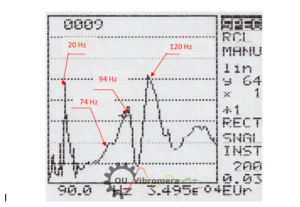
Fig. 2.2. Spectrum of natural frequencies of the Yak-52 aircraft engine suspension.
The frequencies 74 Hz, 94 Hz, and 120 Hz are likely related to the features of the engine mounting (suspension) to the aircraft body.
The frequency 20 Hz is most likely associated with the natural oscillations of the aircraft on the chassis.
The natural frequencies of the propeller blades were also determined using the impact excitation method.
In this case, four main frequencies were identified: 36 Hz, 80 Hz, 104 Hz, and 134 Hz.
Data on the natural frequencies of the Yak-52 aircraft propeller and engine oscillations can be particularly important when choosing the propeller rotation frequency used during balancing. The main condition for selecting this frequency is to ensure its maximum possible detuning from the natural frequencies of the aircraft’s structural elements.
Additionally, knowing the natural frequencies of individual components and parts of the aircraft can be useful for identifying the causes of a sharp increase (in case of resonance) in certain components of the vibration spectrum at various engine speed modes.
2.3. Balancing Results
As noted above, the propeller balancing was performed in one plane, resulting in compensation of the propeller’s force imbalance dynamically.
Performing dynamic balancing in two planes, which would allow compensation of both force and moment imbalance of the propeller, was not feasible, as the design of the propeller installed on the Yak-52 aircraft allows for the formation of only one correction plane.
The propeller balancing was performed at a rotation frequency of 1150 rpm (60%), at which it was possible to obtain the most stable vibration measurement results in terms of amplitude and phase from start to start.
The propeller balancing followed the classic “two-run” scheme.
During the first run, the amplitude and phase of vibration at the propeller’s rotation frequency in its initial state were determined.
During the second run, the amplitude and phase of vibration at the propeller’s rotation frequency after installing a trial mass of 7 g on the propeller were determined.
Based on these data, the mass M = 19.5 g and the angle of installation of the correction weight F = 32° were calculated using software.
Due to the design features of the propeller, which do not allow for the installation of the correction weight at the required angle, two equivalent weights were installed on the propeller:
- Weight M1 = 14 g at angle F1 = 0°;
- Weight M2 = 8.3 g at angle F2 = 60°.
After installing the specified correction weights on the propeller, the vibration measured at a rotation frequency of 1150 rpm and associated with the propeller imbalance decreased from 10.2 mm/sec in the initial state to 4.2 mm/sec after balancing.
In this case, the actual imbalance of the propeller decreased from 2340 g*mm to 963 g*mm.
2.4. Checking the Effect of Balancing Results on the Vibration Level of the Yak-52 Aircraft on the Ground at Other Propeller Rotation Frequencies
The results of checking the Yak-52 aircraft vibration, performed at other engine operating modes obtained during ground tests, are presented in Table 2.1.
As can be seen from the table, the balancing performed positively affected the vibration of the Yak-52 aircraft in all its operating modes.
Table 2.1.
| № | Rotation Frequency, % | Propeller Rotation Frequency, rpm | RMS Vibration Speed, mm/sec |
|---|---|---|---|
| 1 | 60 | 1153 | 4.2 |
| 2 | 65 | 1257 | 2.6 |
| 3 | 70 | 1345 | 2.1 |
| 4 | 82 | 1572 | 1.25 |
Additional Vibration Test Results
2.5. Checking the Vibration of the Yak-52 Aircraft in the Air at Main Flight Modes Before and After Adjusting the Shock Absorber Tension
Moreover, during ground tests, a significant reduction in aircraft vibration was identified with an increase in its propeller rotation frequency.
This can be explained by a greater degree of detuning of the propeller rotation frequency from the aircraft’s natural oscillation frequency on the chassis (presumably 20 Hz), which occurs when the propeller rotation frequency increases.
In addition to the vibration tests conducted after the propeller balancing on the ground (see section 2.3), vibration measurements of the Yak-52 aircraft in flight were carried out.
Vibration in flight was measured in the second pilot’s cabin in the vertical direction using a portable vibration spectrum analyzer model AD-3527 by A&D (Japan) in the frequency range from 5 to 200 (500) Hz.
Measurements were taken at five main engine speed modes, respectively equal to 60%, 65%, 70%, and 82% of its maximum rotation frequency.
The measurement results, conducted before adjusting the shock absorbers, are presented in Table 2.2.
Table 2.2.
Vibration Spectrum Components
| № | Propeller Rotation Frequency, % | Propeller Rotation Frequency, rpm | Vв1 (Hz) | Amplitude Vв1 (mm/sec) | Vн (Hz) | Amplitude Vн (mm/sec) | Vк1 (Hz) | Amplitude Vк1 (mm/sec) | Vв2 (Hz) | Amplitude Vв2 (mm/sec) | Vк2 (Hz) | Amplitude Vк2 (mm/sec) | Vв4 (Hz) | Amplitude Vв4 (mm/sec) | Vк3 (Hz) | Amplitude Vк3 (mm/sec) | Vв5 (Hz) | Amplitude Vв5 (mm/sec) | V∑ (mm/sec) |
|---|---|---|---|---|---|---|---|---|---|---|---|---|---|---|---|---|---|---|---|
| 1 | 60 | 1155 | 1155 | 4.4 | 1560 | 1.5 | 1755 | 1.0 | 2310 | 1.5 | 3510 | 4.0 | 4620 | 1.3 | 5265 | 0.7 | 5775 | 0.9 | 6.1 |
| 1244 | 3.5 | 1680 | 1.2 | 1890 | 2.1 | 2488 | 1.2 | 3780 | 4.1 | 4976 | 0.4 | 5670 | 1.2 | ||||||
| 2 | 65 | 1244 | 1244 | 3.5 | 1680 | 1.2 | 1890 | 2.1 | 2488 | 1.2 | 3780 | 4.1 | 4976 | 0.4 | 5670 | 1.2 | 6.2 | ||
| 1342 | 2.8 | 1860 | 0.4 | 2040 | 3.2 | 2684 | 0.4 | 4080 | 2.9 | 5369 | 2.3 | ||||||||
| 3 | 70 | 1342 | 1342 | 2.8 | 1860 | 0.4 | 2040 | 3.2 | 2684 | 0.4 | 4080 | 2.9 | 5369 | 2.3 | 5.0 | ||||
| 1580 | 4.7 | 2160 | 2.9 | 2400 | 1.1 | 3160 | 0.4 | 4800 | 12.5 | ||||||||||
| 4 | 82 | 1580 | 1580 | 4.7 | 2160 | 2.9 | 2400 | 1.1 | 3160 | 0.4 | 4800 | 12.5 | 13.7 | ||||||
| 1830 | 2.2 | 2484 | 3.4 | 2760 | 1.7 | 3660 | 2.8 | 5520 | 15.8 | 7320 | 3.7 | ||||||||
| 5 | 94 | 1830 | 1830 | 2.2 | 2484 | 3.4 | 2760 | 1.7 | 3660 | 2.8 | 5520 | 15.8 | 7320 | 3.7 | 17.1 |
As an example, Figures 2.3 and 2.4 show the spectra graphs obtained when measuring vibration in the Yak-52 aircraft cabin at modes of 60% and 94% used for filling in Table 2.2.
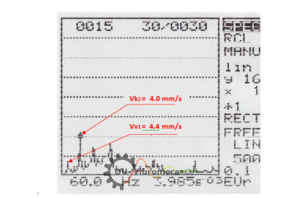
Fig. 2.3. Vibration spectrum in the Yak-52 aircraft cabin at 60% mode.
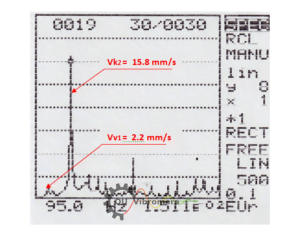
Fig. 2.4. Vibration spectrum in the Yak-52 aircraft cabin at 94% mode.
As seen from Table 2.2, the main components of the vibration measured in the second pilot’s cabin appear at the propeller rotation frequencies Vв1 (highlighted in yellow), the engine crankshaft Vк1 (highlighted in blue), and the air compressor drive (and/or frequency sensor) Vн (highlighted in green), as well as at their higher harmonics Vв2, Vв4, Vв5, and Vк2, Vк3.
The maximum total vibration V∑ was found at speed modes of 82% (1580 rpm of the propeller) and 94% (1830 rpm).
The main component of this vibration appears at the 2nd harmonic of the engine crankshaft rotation frequency Vк2 and respectively reaches values of 12.5 mm/sec at a frequency of 4800 cycles/min and 15.8 mm/sec at a frequency of 5520 cycles/min.
It can be assumed that this component is associated with the operation of the engine’s piston group (impact processes occurring during the double movement of the pistons per one crankshaft revolution).
The sharp increase of this component at the 82% (first nominal) and 94% (take-off) modes is most likely caused not by defects in the piston group, but by the resonant oscillations of the engine mounted in the aircraft body on shock absorbers.
This conclusion is confirmed by the previously discussed experimental results of checking the natural frequencies of the engine suspension oscillations, in the spectrum of which there are 74 Hz (4440 cycles/min), 94 Hz (5640 cycles/min), and 120 Hz (7200 cycles/min).
Two of these natural frequencies, 74 Hz and 94 Hz, are close to the 2nd harmonic frequencies of the crankshaft rotation, which occur at the first nominal and take-off modes of the engine.
Due to the significant vibrations at the 2nd crankshaft harmonic found during the vibration tests at the first nominal and take-off modes of the engine, a check and adjustment of the tightening force of the engine suspension shock absorbers was carried out.
The comparative test results obtained before and after adjusting the shock absorbers for the propeller rotation frequency (Vв1) and the 2nd harmonic of the crankshaft rotation frequency (Vк2) are presented in Table 2.3.
Table 2.3.
| № | Propeller Rotation Frequency, % | Propeller Rotation Frequency, rpm | Vв1 (Before) | Vв1 (After) | Vк2 (Before) | Vк2 (After) |
|---|---|---|---|---|---|---|
| 1 | 60 | 1155 (1140) |
1155 4.4 |
1140 3.3 |
3510 3.6 |
3480 3.0 |
| 2 | 65 | 1244 (1260) |
1244 3.5 |
1260 3.5 |
3780 4.1 |
3840 4.3 |
| 3 | 70 | 1342 (1350) |
1342 2.8 |
1350 3.3 |
4080 2.9 |
4080 1.2 |
| 4 | 82 | 1580 (1590) |
1580 4.7 |
1590 4.2 |
4800 12.5 |
4830 16.7 |
| 5 | 94 | 1830 (1860) |
1830 2.2 |
1860 2.7 |
5520 15.8 |
5640 15.2 |
As seen from Table 2.3, the adjustment of the shock absorbers did not lead to significant changes in the main vibration components of the aircraft.
It should also be noted that the amplitude of the spectral component associated with the propeller imbalance Vв1, detected at modes 82% and 94% (see Tables 1.2 and 1.3), is respectively 3-7 times lower than the amplitudes of Vк2, present in these modes.
At other flight modes, the component Vв1 ranges from 2.8 to 4.4 mm/sec.
Moreover, as seen from Tables 2.2 and 2.3, its changes when switching from one mode to another are mainly determined not by the quality of balancing, but by the degree of detuning of the propeller rotation frequency from the natural frequencies of various structural elements of the aircraft.
2.6. Conclusions from the Results of the Work
2.6.1.
The balancing of the Yak-52 aircraft propeller, conducted at a propeller rotation frequency of 1150 rpm (60%), allowed reducing the propeller vibration from 10.2 mm/sec to 4.2 mm/sec.
Given the experience gained during the balancing of Yak-52 and Su-29 aircraft propellers using the “Balanset-1” device, it can be assumed that there is a possibility of further reducing the vibration level of the Yak-52 aircraft propeller.
This can be achieved, in particular, by selecting a different (higher) propeller rotation frequency during its balancing, allowing a greater detuning from the aircraft’s natural oscillation frequency of 20 Hz (1200 cycles/min), identified during the tests.
2.6.2.
As shown by the results of vibration tests of the Yak-52 aircraft in flight, its vibration spectra (in addition to the aforementioned component appearing at the propeller rotation frequency) contain several other components associated with the operation of the crankshaft, the engine’s piston group, as well as the air compressor drive (and/or frequency sensor).
The magnitudes of these vibrations at modes 60%, 65%, and 70% are comparable to the magnitude of the vibration associated with the propeller imbalance.
An analysis of these vibrations shows that even the complete elimination of vibration from the propeller imbalance will reduce the total aircraft vibration in these modes by no more than 1.5 times.
2.6.3.
The maximum total vibration V∑ of the Yak-52 aircraft was found at speed modes of 82% (1580 rpm of the propeller) and 94% (1830 rpm of the propeller).
The main component of this vibration appears at the 2nd harmonic of the engine crankshaft rotation frequency Vк2 (at frequencies of 4800 cycles/min or 5520 cycles/min), where it respectively reaches values of 12.5 mm/sec and 15.8 mm/sec.
It can be reasonably assumed that this component is associated with the operation of the engine’s piston group (impact processes occurring during the double movement of the pistons per one crankshaft revolution).
The sharp increase of this component at the modes of 82% (first nominal) and 94% (take-off) is most likely caused not by defects in the piston group, but by resonant oscillations of the engine mounted in the aircraft body on shock absorbers.
The adjustment of the shock absorbers carried out during the tests did not lead to significant changes in vibration.
This situation can presumably be considered as a design oversight by the aircraft developers when choosing the engine mounting (suspension) system in the aircraft body.
2.6.4.
The data obtained during the balancing and additional vibration tests (see flight test results in section 2.5) allow concluding that periodic vibration monitoring can be useful for the diagnostic assessment of the aircraft engine’s technical condition.
Such work can be performed, for example, using the “Balanset-1” device, in which software the function of spectral vibration analysis is implemented.
3. Results of Balancing the MTV-9-K-C/CL 260-27 Propeller and Vibration Survey of the Su-29 Aerobatic Aircraft
3.1. Introduction
On June 15, 2014, the balancing of the three-bladed MTV-9-K-C/CL 260-27 propeller of the M-14P aviation engine of the Su-29 aerobatic aircraft was conducted.
According to the manufacturer, the propeller was preliminarily statically balanced, as evidenced by the presence of a corrective weight in plane 1, installed at the manufacturing plant.
The balancing of the propeller, directly installed on the Su-29 aircraft, was carried out using the “Balanset-1” vibration balancing kit, serial number 149.
The measurement scheme used during balancing is shown in Fig 3.1.
During the balancing process, the vibration sensor (accelerometer) 1 was mounted on the engine gearbox housing using a magnet on a special bracket.
The laser phase angle sensor 2 was also mounted on the gearbox housing and oriented to the reflective mark applied to one of the propeller blades.
Analog signals from the sensors were transmitted via cables to the measuring unit of the “Balanset-1” device, where they were pre-processed digitally.
Then these signals were sent in digital form to a computer, where software processing of these signals was carried out and the mass and angle of the corrective weight required to compensate for the propeller imbalance were calculated.
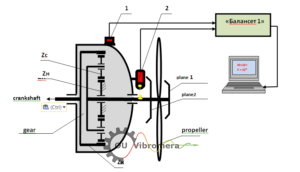
Fig. 3.1. Measurement scheme for balancing the Su-29 aircraft propeller.
Zk – main gear wheel of the gearbox with 75 teeth;
Zc – gearbox satellites in the amount of 6 pieces with 18 teeth each;
Zn – stationary gear wheel of the gearbox with 39 teeth.
Before conducting this work, considering the experience gained from balancing the Yak-52 aircraft propeller, a number of additional studies were carried out, including:
- Determining the natural frequencies of the Su-29 aircraft engine and propeller oscillations;
- Checking the magnitude and spectral composition of the initial vibration in the second pilot’s cabin before balancing.
3.2. Results of Studies on the Natural Frequencies of Engine and Propeller Oscillations
The natural frequencies of the engine oscillations, mounted on shock absorbers in the aircraft body, were determined using the AD-3527 spectrum analyzer by A&D (Japan) through impact excitation of engine oscillations.
In the spectrum of the natural oscillations of the engine suspension (see Fig. 3.2), six main frequencies were identified: 16 Hz, 22 Hz, 37 Hz, 66 Hz, 88 Hz, 120 Hz.
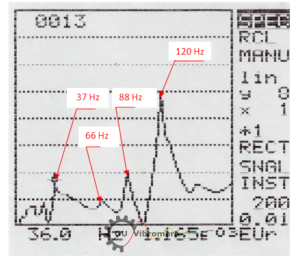
Of these, it is assumed that the frequencies 66 Hz, 88 Hz, and 120 Hz are directly related to the features of the engine mounting (suspension) to the aircraft body.
The frequencies 16 Hz and 22 Hz are most likely associated with the natural oscillations of the aircraft on the chassis.
The frequency 37 Hz is probably related to the natural frequency of the aircraft propeller blade oscillations.
This assumption is confirmed by the results of checking the natural frequencies of the propeller oscillations, also obtained by the impact excitation method.
In the spectrum of the natural oscillations of the propeller blade (see Fig. 3.3), three main frequencies were identified: 37 Hz, 100 Hz, and 174 Hz.
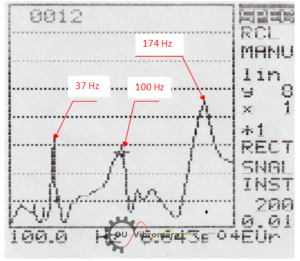
Data on the natural frequencies of the propeller blade and engine oscillations of the Su-29 aircraft can be particularly important when choosing the propeller rotation frequency used during balancing. The main condition for selecting this frequency is to ensure its maximum possible detuning from the natural frequencies of the aircraft’s structural elements.
Moreover, knowing the natural frequencies of individual components and parts of the aircraft can be useful for identifying the causes of a sharp increase (in case of resonance) in certain components of the vibration spectrum at various engine speed modes.
3.3. Checking Vibration in the Second Pilot’s Cabin of the Su-29 Aircraft on the Ground Before Balancing
The initial vibration of the Su-29 aircraft, identified before propeller balancing, was measured in the second pilot’s cabin in the vertical direction using a portable vibration spectrum analyzer model AD-3527 by A&D (Japan) in the frequency range from 5 to 200 Hz.
Measurements were taken at four main engine speed modes, respectively equal to 60%, 65%, 70%, and 82% of its maximum rotation frequency.
The results obtained are presented in Table 3.1.
As seen from Table 2.1, the main components of the vibration appear at the propeller rotation frequencies Vв1, the engine crankshaft Vк1, and the air compressor drive (and/or frequency sensor) Vн, as well as at the 2nd harmonic of the crankshaft Vк2 and possibly the 3rd (blade) harmonic of the propeller Vв3, which is close in frequency to the second harmonic of the crankshaft.
Table 3.1.
| № | Propeller Rotation Frequency, % | Propeller Rotation Frequency, rpm | Vв1 | Vн | Vк1 | Vв3 | Vк2 | Vв4 | Vк3 | V? | V∑, mm/sec |
|---|---|---|---|---|---|---|---|---|---|---|---|
| 1 | 60 | 1150 5.4 |
1560 2.6 |
1740 2.0 |
3450 – |
3480 – |
6120 2.8 |
– | – | – | 8.0 |
| 2 | 65 | 1240 5.7 |
1700 2.4 |
1890 3.2 |
3780 – |
– | – | – | – | – | 10.6 |
| 3 | 70 | 1320 5.2 |
1860 3.0 |
2010 2.5 |
3960 – |
4020 – |
– | – | – | 11.5 | |
| 4 | 82 | 1580 3.2 |
2160 1.5 |
2400 3.0 |
4740 – |
4800 8.5 |
– | – | – | 9.7 |
Moreover, in the vibration spectrum at the 60% speed mode, an unidentified component with the calculated spectrum was found at a frequency of 6120 cycles/min, which may be caused by resonance at a frequency of about 100 Hz of one of the aircraft’s structural elements. Such an element could be the propeller, one of the natural frequencies of which is 100 Hz.
The maximum total vibration of the aircraft V∑, reaching 11.5 mm/sec, was found at the 70% speed mode.
The main component of the total vibration in this mode appears at the 2nd harmonic (4020 cycles/min) of the engine crankshaft rotation frequency Vк2 and is equal to 10.8 mm/sec.
It can be assumed that this component is associated with the operation of the engine’s piston group (impact processes occurring during the double movement of the pistons per one crankshaft revolution).
The sharp increase of this component at the 70% mode is probably due to the resonant oscillations of one of the aircraft’s structural elements (engine suspension in the aircraft body) at a frequency of 67 Hz (4020 cycles/min).
It should be noted that in addition to the impact disturbances associated with the operation of the piston group, the magnitude of the vibration in this frequency range may be influenced by the aerodynamic force manifesting at the blade frequency of the propeller (Vв3).
At the 65% and 82% speed modes, a noticeable increase in the component Vк2 (Vв3) is also observed, which can also be explained by the resonant oscillations of individual aircraft components.
The amplitude of the spectral component associated with the propeller imbalance Vв1, identified at the main speed modes before balancing, ranged from 2.4 to 5.7 mm/sec, which is generally lower than the value of Vк2 at the corresponding modes.
Moreover, as seen from Table 3.1, its changes when switching from one mode to another are determined not only by the quality of balancing but also by the degree of detuning the propeller rotation frequency from the natural frequencies of the aircraft’s structural elements.
3.4. Balancing Results
The propeller balancing was performed in one plane at a rotation frequency. As a result of such balancing, the dynamic force imbalance of the propeller was compensated.
The balancing protocol is provided below in Appendix 1.
The balancing was performed at a propeller rotation frequency of 1350 rpm and involved two measurement runs.
During the first run, the amplitude and phase of the vibration at the propeller rotation frequency in the initial state were determined.
During the second run, the amplitude and phase of the vibration at the propeller rotation frequency after installing a trial mass of known weight on the propeller were determined.
Based on the results of these measurements, the mass and installation angle of the corrective weight in plane 1 were determined.
After installing the calculated value of the corrective weight on the propeller, which was 40.9 g, the vibration at this speed mode decreased from 6.7 mm/sec in the initial state to 1.5 mm/sec after balancing.
The level of vibration associated with the propeller imbalance at other speed modes also decreased and remained within the range of 1 to 2.5 mm/sec after balancing.
Verification of the balancing quality’s effect on the aircraft’s vibration level in flight was not carried out due to the accidental damage to this propeller during one of the training flights.
It should be noted that the result obtained during this balancing significantly differs from the result of the factory balancing.
In particular:
- The vibration at the propeller rotation frequency after its balancing at the permanent installation site (on the output shaft of the Su-29 aircraft gearbox) was reduced by more than 4 times;
- The corrective weight installed during the balancing process was shifted relative to the weight installed at the manufacturing plant by approximately 130 degrees.
Possible reasons for this situation may include:
- Measurement system errors of the manufacturer’s balancing stand (unlikely);
- Geometric errors of the mounting locations of the spindle coupling of the manufacturer’s balancing machine, leading to radial runout of the propeller when installed on the spindle;
- Geometric errors of the mounting locations of the output shaft coupling of the aircraft gearbox, leading to radial runout of the propeller when installed on the gearbox shaft.
3.5. Conclusions from the Results of the Work
3.5.1.
The balancing of the Su-29 aircraft propeller, conducted in one plane at a propeller rotation frequency of 1350 rpm (70%), allowed reducing the propeller vibration from 6.7 mm/sec to 1.5 mm/sec.
The level of vibration associated with the propeller imbalance at other speed modes also significantly decreased and remained within the range of 1 to 2.5 mm/sec.
3.5.2.
To clarify the possible reasons for the unsatisfactory balancing results performed at the manufacturing plant, it is necessary to check the radial runout of the propeller on the output shaft of the aircraft engine gearbox.
Appendix 1
BALANCING PROTOCOL
MTV-9-K-C/CL 260-27 propeller of the Su-29 aerobatic aircraft
1. Customer: V.D. Chvokov
2. Propeller installation site: output shaft of the Su-29 aircraft gearbox
3. Propeller type: MTV-9-K-C/CL 260-27
4. Balancing method: assembled on-site (in own bearings), in one plane
5. Propeller rotation frequency during balancing, rpm: 1350
6. Model, serial number, and manufacturer of the balancing device: “Balanset-1”, serial number 149
7. Regulatory documents used during balancing:
7.1. _____________________________________________________________
_____________________________________________________________
8. Balancing date: 15.06.2014
9. Summary table of balancing results:
| № | Measurement Results | Vibration, mm/sec | Imbalance, g* mm |
|---|---|---|---|
| 1 | Before balancing *) | 6.7 | 6135 |
| 2 | After balancing | 1.5 | 1350 |
| ISO 1940 Tolerance for Class G 6.3 | 1500 | ||
*) Note: Balancing was performed with the corrective weight installed by the manufacturer remaining on the propeller.
10. Conclusion:
10.1. The vibration level (residual imbalance) after balancing the propeller installed on the output shaft of the Su-29 aircraft gearbox (see p.9.2) has been reduced by more than 4 times compared to the initial state (see p. 9.1).
10.2. The parameters of the corrective weight (mass, installation angle) used to achieve the result in p. 10.1 differ significantly from the parameters of the corrective weight installed by the manufacturer (MT-propeller).
In particular, an additional corrective weight of 40.9 g was installed on the propeller during balancing, which was shifted by an angle of 130° relative to the weight installed by the manufacturer.
(The weight installed by the manufacturer was not removed from the propeller during additional balancing).
Possible reasons for this situation may include:
- Errors in the measuring system of the manufacturer’s balancing stand;
- Geometric errors in the mounting locations of the spindle coupling of the manufacturer’s balancing machine, leading to radial runout of the propeller when installed on the spindle;
- Geometric errors in the mounting locations of the output shaft coupling of the aircraft gearbox, leading to radial runout of the propeller when installed on the gearbox shaft.
To identify the specific cause leading to increased propeller imbalance when installed on the output shaft of the Su-29 aircraft gearbox, it is necessary to:
- Check the measuring system and geometric accuracy of the spindle mounting locations of the balancing machine used for balancing the MTV-9-K-C/CL 260-27 propeller at the manufacturer;
- Check the radial runout of the propeller installed on the output shaft of the Su-29 aircraft gearbox.
Executor:
Chief Specialist of LLC “Kinematics”
Feldman V.D.